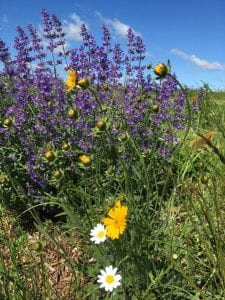
Obviously, nothing is growing right now, but I thought this would be a good time to update you on the success of our beneficial insect habitat plots during the 2019 growing season.
When things bloomed
Recall that the goal is to have at least one plant blooming all season long. We choose wildflower species accordingly, and it worked! The following table shows which months each species bloomed in 2019 (at least in the transplanted plots). An ‘X’ means the species was blooming during that month.
| Wildflower | May | June | July | Aug | Sep |
| Golden alexanders | X | X | |||
| Catmint | X | X | X | X | |
| Lanced-leaved coreopsis | X | X | |||
| Tall white beard tongue | X | X | |||
| Ohio spiderwort | X | X | |||
| Anise hyssop | X | X | X | ||
| Echinacea | X | X | X | ||
| Orange coneflower | X | X | X | ||
| Boneset | X | X | X | ||
| Wild bergamot | X | X | |||
| Common milkweed | X | ||||
| NY ironweed | X | X | |||
| Showy goldenrod | X | ||||
| New England aster | X | ||||
| Blue false indigo |
You may notice that the blue false indigo never bloomed in 2019, which was disappointing. Most of these plants are still alive (as you’ll see later in this post). They just didn’t bloom. Maybe next year?
Here’s what each species looks like:
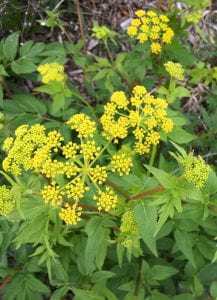
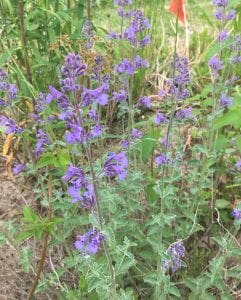
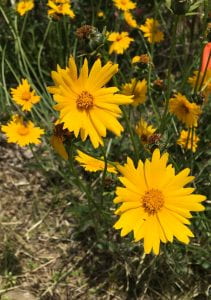
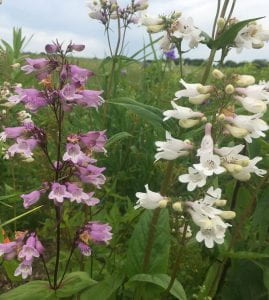
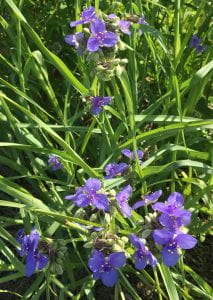
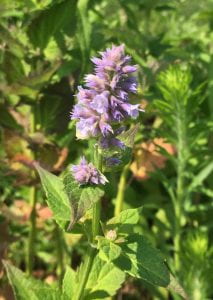
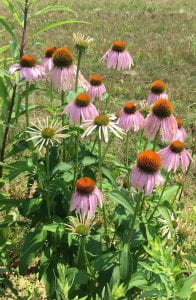
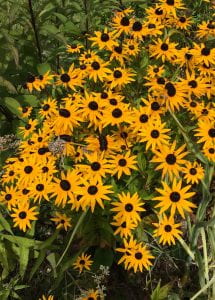
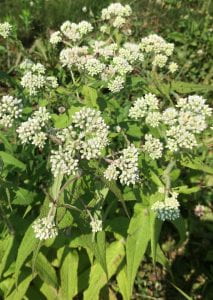
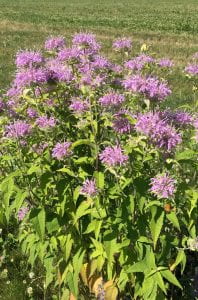
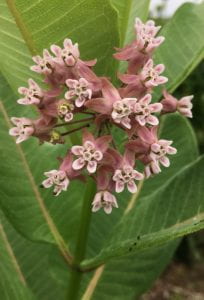
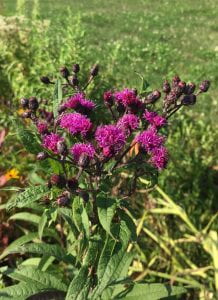
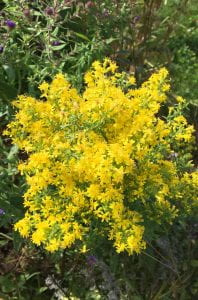
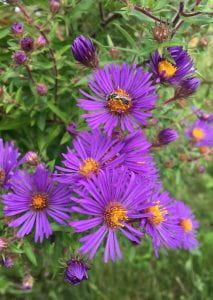
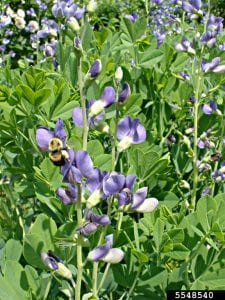
Transplanted wildflowers
The wildflowers in our transplanted plots are surviving pretty well (>80%). In the plots that were transplanted in the fall after the buckwheat cover crop, the survival is a bit lower. I think this has to do with some weed control issues (more on this in a future post).

Some species have survived better than others, as the following chart shows. Again, we counted plants both in Spring and Fall 2019.

What about the direct-seeded plots?
Only three species of wildflowers planted by seed in Spring or Fall 2018 bloomed during the 2019 season. The table below shows which months these blooms were seen (marked with an ‘X’).
| Common name | May | June | July | Aug | Sep |
| Coreopsis | X | X | X | ||
| Blackeyed susan | X | X | X | ||
| Partridge pea | X | X |
Here’s what the flowers of blackeyed susan look like. The plant has much hairier leaves than the orange coneflower.
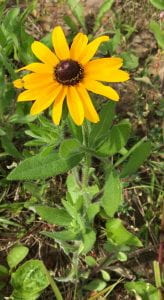
And here’s the partridge pea:
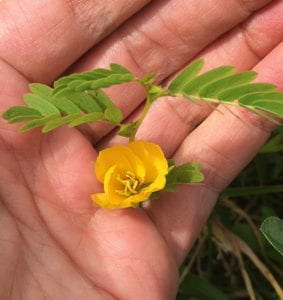
But, I also spotted some wild bergamot, tall white beard tongue, asters, golden alexanders, and either echinacea or orange coneflower seedlings. (I haven’t honed my horticultural skills enough yet to distinguish the foliage of these last two wildflowers.)
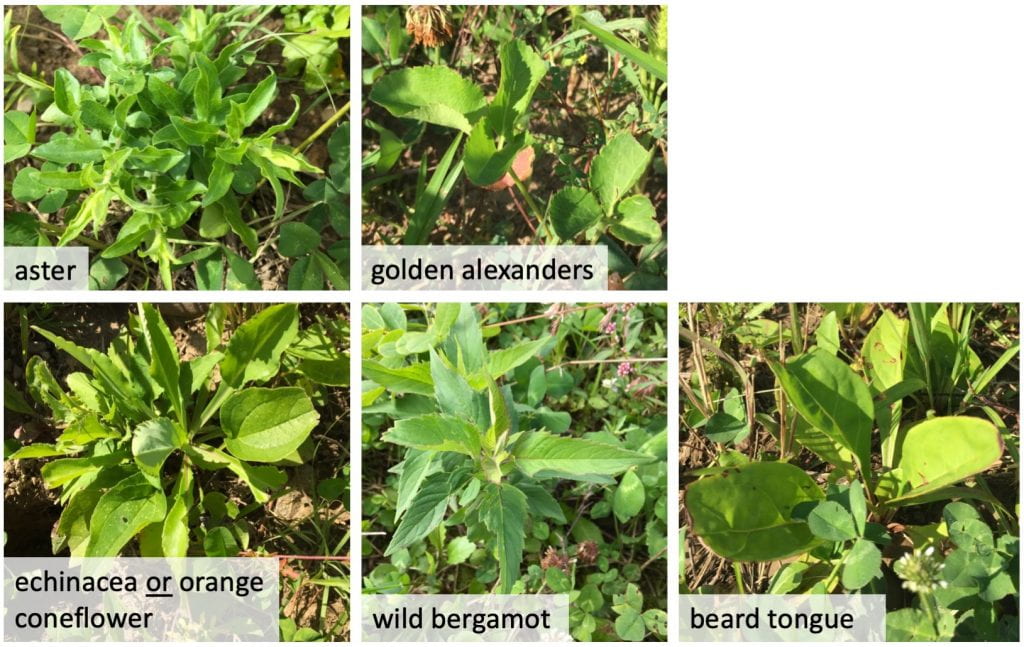
There were also plenty of weeds blooming throughout the summer, and many of them were providing pollen and nectar for pollinators and natural enemies. Here are just a few examples:
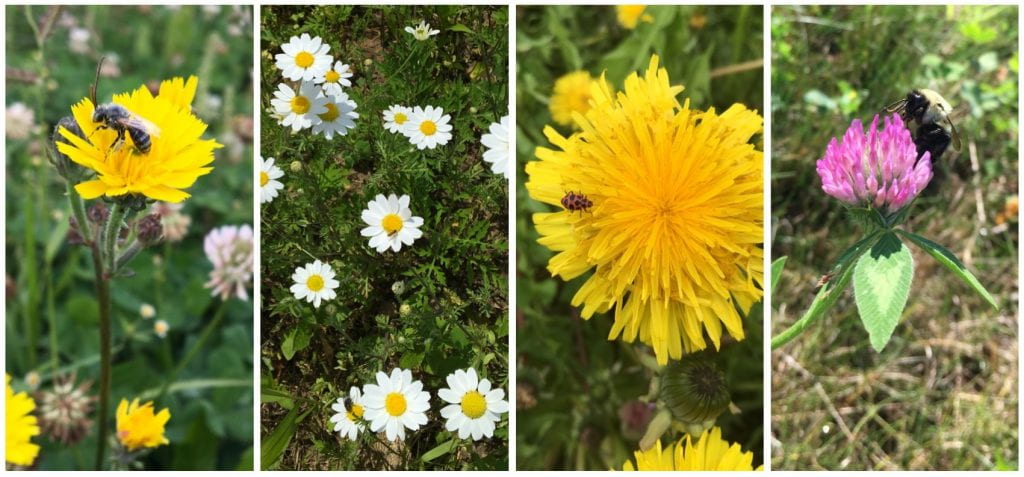
This table summarizes when during the season different weeds were in bloom. Again, an ‘X’ indicates the weed was blooming that month.
| Weed | May | June | July | Aug | Sep |
| Campion | X | X | X | X | X |
| Chamomile | X | X | X | X | X |
| Clover | X | X | X | X | X |
| Dandelion | X | X | X | X | X |
| Vetch | X | X | X | X | X |
| Viola | X | X | X | X | X |
| Mustard | X | X | X | X | |
| Deadnettle | X | X | |||
| Baby blue eyes | X | ||||
| Henbit | X | ||||
| Asters | X | X | X | X | |
| Buckwheat | X | X | X | X | |
| Oxalis | X | X | X | X | |
| Plantain | X | X | X | X | |
| Wild lettuce | X | X | X | X | |
| Cinquefoil | X | X | X | ||
| Indian hemp | X | X | X | ||
| Redshank | X | X | X | ||
| Chickweed | X | X | |||
| Galinsoga | X | X | |||
| Geraniums | X | ||||
| Sandwort | X | ||||
| Grass | X | X | |||
| Horse weed | X | X | |||
| Lambsquarters | X | X | |||
| Ragweed | X | X | |||
| Black bindweed | X | ||||
| Chicory | X |
There’s more!
In addition to keeping track of what bloomed from May through September, we were also still tracking costs and time spent on each plot in 2019. And of course we collected a LOT of insects. But those stories will have to wait for another post.
This post was written by Amara Dunn. All pictures were taken by her, unless otherwise credited.
This work is supported by:
- Crop Protection and Pest Management -Extension Implementation Program Area grant no. 2017-70006-27142/project accession no. 1014000, from the USDA National Institute of Food and Agriculture.
- New York State Department of Agriculture and Markets
- Towards Sustainability Foundation
